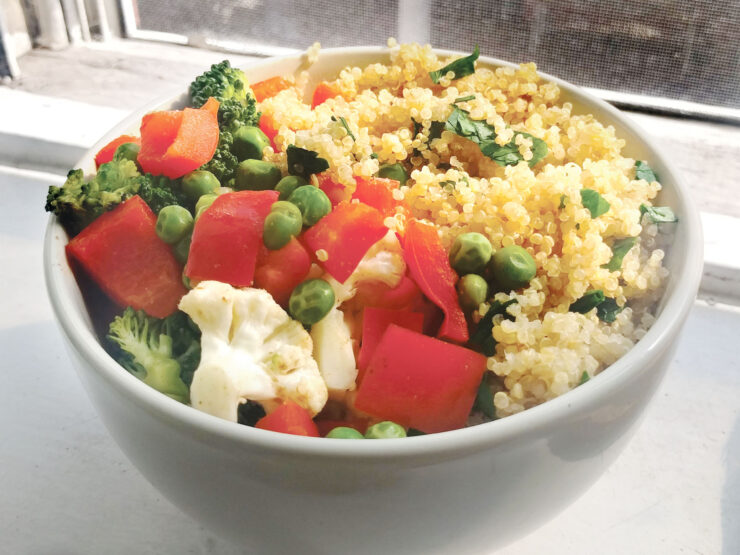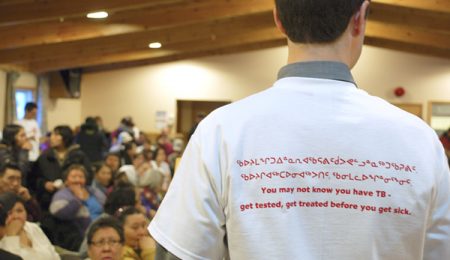One dietary change that could have a huge impact on our planet
When it comes to mitigating climate change, we often hear about the classic offenders like energy, waste, and transportation. However, one major element tends to be missing from our discussions on how to reduce our impact on the planet. It’s a shame that this is the case, because this one change could be one of the biggest things you can do on a personal level to reduce your carbon footprint.
I’m going to give you a full disclosure that I am vegan, for the sole purpose of reducing my carbon footprint. I wanted to write this article because so few people I’ve spoken to about my dietary change even knew that reducing intake of animal products had anything to do with climate change.
But if we’re serious about mitigating climate change, which we should be, it’s imperative to bring animal agriculture into the discussion.
According to the Food and Agriculture Organization (FAO) of the United Nations, animal agriculture accounts for 14.5 per cent of all human-made emissions, and the demand for animal products is expected to grow by 70 per cent by 2050.
Not only is this a higher contributing percentage than all forms of transportation combined, but its effects can be seen everywhere—from land, to water, to the air we breathe. The FAO also reported for the period from 1950 to 2002 that about 75 per cent of the world’s fisheries are either exploited or depleted.
This exploitation of fish populations can disrupt the food chains in those ecosystems, causing organisms that depend on those fish to suffer. Not to mention that waste from animal agriculture is a huge contributor to oceanic dead zones, where the oxygen content becomes too low for marine life to survive.
Back on land, we see the effects of animal agriculture in deforestation for raising crops to feed livestock. National Geographic, among other sources, notes that animal agriculture is the biggest driver of deforestation. The Wageningen University and Research Centre quantifies this claim in their 2012 report in Science Daily, asserting that animal agriculture is the driver behind approximately 80 per cent of deforestation worldwide.
But it’s just a few trees right, what’s the big deal? Well, because trees absorb greenhouse gases, mass deforestation means that more of these gases are entering our atmosphere. In addition to that, trees play a crucial role in regulating the water cycle, meaning that when deforestation occurs we see former lush forest areas turn to barren desert lands. Lastly, with fewer trees blocking the sunlight, forests are deprived of a natural canopy that can lead to temperature swings that disrupt ecosystems.
Although you might think taking shorter showers is the best way to conserve water on an individual level, think again. The Georgetown Environmental Law Review reports that animal agriculture is the top consumer of freshwater by a large margin. For example, the report says that animal agriculture consumes on average 55 trillion gallons of water annually. This amounts to more than 520 times the water used in hydraulic fracturing.
But amidst all these issues with animal agriculture, there is some positive research being done on how to more sustainably create animal products for consumption. In 2013, the FAO used the Intergovernmental Panel on Climate Change’s new calculation measures to show that the meat and dairy industries have the potential to reduce their emissions by 30 per cent.
This is fantastic news, but the key word to note is “potential.” Every industry that we point the finger at for climate change does have the potential to operate more sustainably—but have any of them really done it to the extent that’s needed?
For now, until companies take the steps needed to green their operations, the onus is on us as consumers to show the market that we demand sustainable alternatives.
This brings me to a final call to action for anyone who believes that climate change is too big of a problem for them to have a personal impact. Reducing your animal product intake, whether that means you adopt a vegetarian, flexitarian, pescitarian, or vegan lifestyle, is something many of us can do right now. No matter how much you alter your diet, every little bit counts!
The effects of animal agriculture are far-reaching, but so are our lifestyle decisions. By choosing to consume fewer animal products, you are choosing a sustainable future.
Recipes for sustainability
Although plant-based diets can get a bad rap for being expensive, I find that I actually spend less money on groceries and make more conscious decisions about the processed foods I eat. Like your other expenses at school, it’s all about budgeting. Read on for some wallet-friendly, plant-based recipes!
The easiest quinoa bowl you’ll ever make
Is it one of those days where you just want to throw a meal together as fast as possible? This dish will keep you satisfied as you run from class to work and back. It’s ready in 20 minutes, and if you make a big helping you can pack the leftovers up for the rest of the week!
Ingredients
- 1 cup of quinoa
- 2 tbsp olive oil
- 1-2 tbsp fresh parsley (chopped)
- 1-2 tbsp of garlic (chopped)
- 1 tbsp of cumin (or more if you prefer!)
- A few shakes of salt
- Veggies or plant-based protein of your choosing
Instructions
Bring water to boil in a big pot, add as much quinoa as you’d like. Lower heat and cover until the quinoa is soft. Drain water if needed, and add the spices and veggies. Stir, taste, add more spice if you like, and enjoy!
Yummy yellow coconut curry
As the days get colder, whip up this little hug in a bowl if you’re craving some cozy comfort food. Treat yo’self to this climate-friendly favourite!
Ingredients
- 1 can of coconut milk (400 mL)
- 1/2 cup of water
- 2 tbsp garlic (chopped)
- 1 tbsp curry powder
- 1 tbsp of brown sugar
- 1 tbsp of tahini or extra virgin olive oil
- 1 tbsp of soy sauce
- 1/2 tbsp of ginger powder
- 1/4 tbsp of cayenne pepper
Instructions
Add all ingredients to a pot and bring to boil. Lower heat to medium and stir consistently until well-mixed. Add veggies of choice and stir over low heat until mixed. Enjoy!





